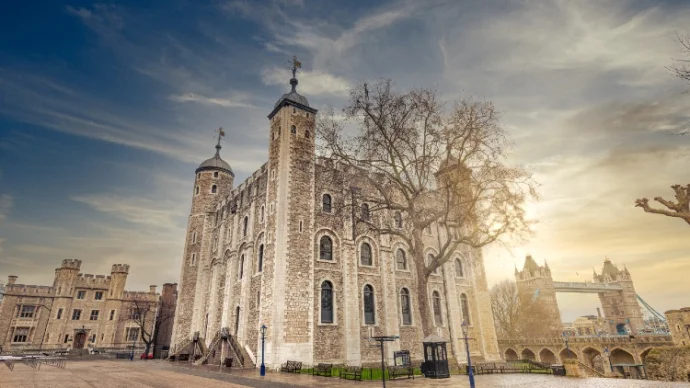
About Tower Bridge
Tower Bridge is an iconic 19th century bridge which stands over the River Thames in London.
History of Tower Bridge
The impetus to build Tower Bridge began gaining momentum in 1876, when it was decided that there was a need for a bridge to the east of London Bridge to accommodate the increasing commercial development in that part of the city. A competition was launched for the design of this new bridge, as a result of which city architect Horace Jones and engineer John Wolfe Barry were chosen to collaborate on the project.
The main concern was that the location of this new bridge meant that it could not be built in a traditional style as it had to allow access to ships to the port of London (which in the Victorian era was the busiest port in the world). Thus, Tower Bridge was designed as a drawbridge so that it would not obstruct the shipping passing up or downstream. The solution is what you see today, except that the once steam powered mechanisms are now electric.
Tower Bridge was built between 1886-1894, and opened on 30 June 1894 by the then Prince of Wales (later King Edward VII). When it was built, Tower Bridge was the largest and most sophisticated bascule bridge ever completed (‘bascule‘ comes from the French word for ‘seesaw’).
The walkways, much used by the population, were closed to the public from 1910-1982 as many ‘undesirables’ were using it. They were reopened in 1982, along with a permanent exhibition inside called The Tower Bridge Experience.
Tower Bridge today
Tower Bridge is still very much in use – over 40,000 people cross Tower Bridge each day, and it opens to allow tall ships to pass through an average of twice a day – roughly between 700-1,000 times each year.
River traffic has always had priority on this stretch of the Thames. Ships must book a Bridge lift in writing at least 24 hours in advance, and be more than 9 metres tall. The cost for opening Tower Bridge has always been completely free.
Tower Bridge offers a wonderful exhibition on its structure and engineering, including a high glass floor walkway between the two towers. It can even be hired for private functions.
Getting to Tower Bridge
The main entrance to visit Tower Bridge is located at the North West Tower, Tower Bridge Road. The nearest car park is Tower Hill Coach and Car Park in Lower Thames Street, but as with all London sites, it’s best to come by public transport.
The nearest tube station is Tower Hill, a 7 minute walk away. The closest rail stations are London Bridge, Fenchurch Street or Tower Gateway DLR Stations. Blackfriars is also nearby if you fancy a walk along the Thames on your approach, as are Cannon Street or City Thameslink.
Riverboats stop at St Katherine Pier and Tower Pier on the North Bank, and at London Bridge City Pier on the South Bank – all are a short walk from Tower Bridge. Bus routes that run to Tower Bridge include 15, 42, 78,100, 343.
Featured In

Best Bridges in Europe
From the charming Ponte Vecchio bridge in Florence to the iconic Mostar Bridge in Bosnia-Herzegovina, here are 10 of the most unmissable crossings in Europe.

London Historic Sites
Londinium, The Big Smoke, The Great Wen: London has experienced its fair share of change over its 2000-year history. Here's our pick of some of the British capital's most famous historic sites to visit today.




















